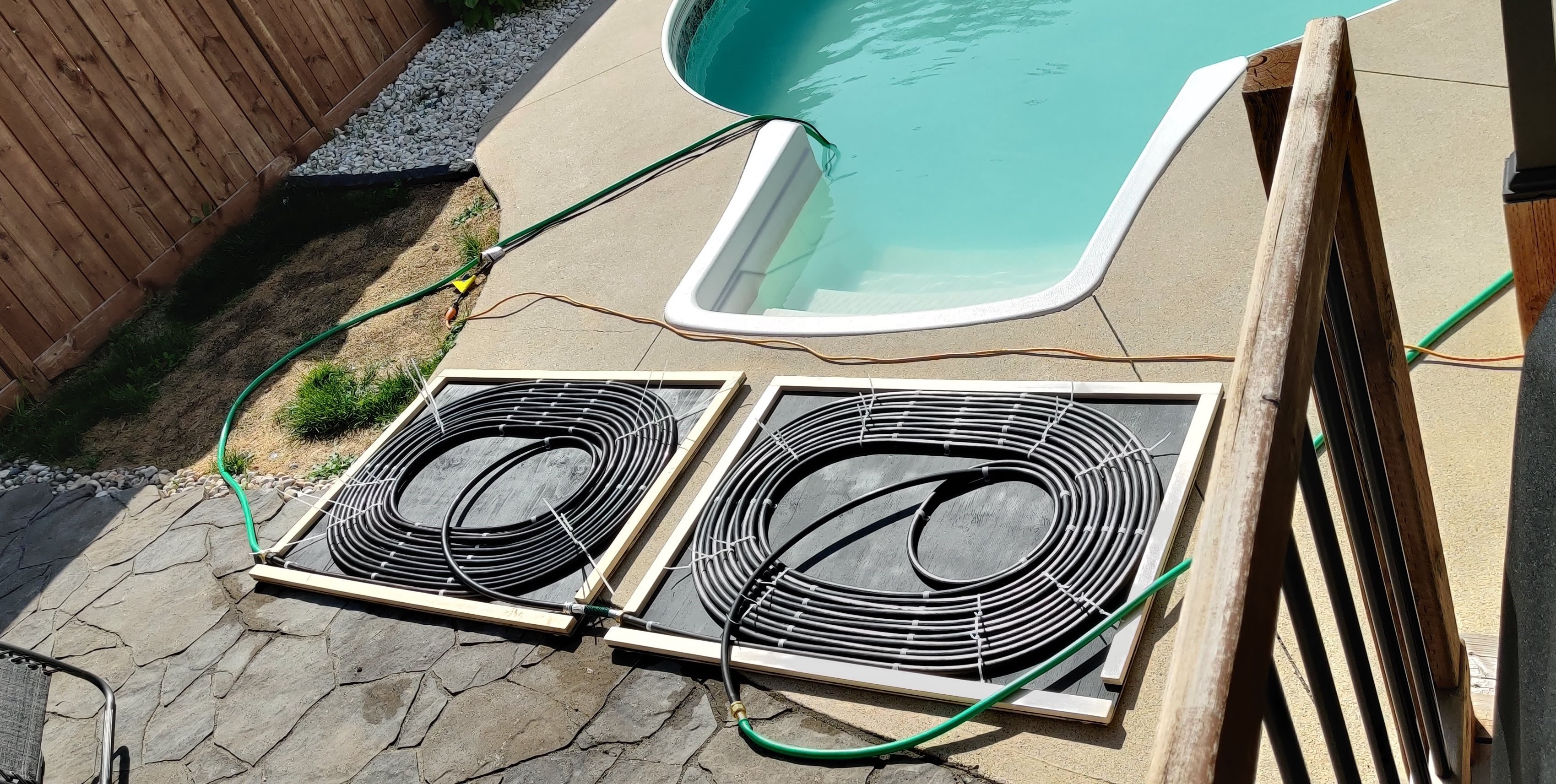Project: Solar Pool Heater
“Every 24 hours, enough sunlight touches the earth to provide energy for the entire planet for 24 years.” - Martha Maeda

My father and I embarked on a journey to harness the power of the sun and reduce our reliance on natural gas to heat our pool. This endeavor was not only driven by sustainability but also by the desire to repurpose a submersible pump originally acquired to combat flooding issues beneath our AC unit, a problem we had resolved through a French drain project. With the pump now idle, we decided to embark on the construction of a solar pool heater.
Our goal was to create an efficient and modular solar pool heater that could efficiently circulate water using the submersible pump. The system needed to be expandable, allowing us to connect multiple panels together. Additionally, we had to ensure the panels would fit neatly inside our shed, which could accommodate 3’x4’ panels. The primary components included a backboard, the submersible pump, and black hose.
The most demanding aspect of this project was coiling the hose effectively. After extensive research, we opted for two 100’ black vinyl tubes due to their cost-efficiency and durability, though they proved challenging to wrap neatly. We developed a systematic approach to secure the hose in place effectively.
Methodology
- Cut a 4x8 plywood sheet into two 3’x4’ sections.
- Sand the edges to achieve smooth finishes.
- Apply 2-3 coats of black spray paint followed by a clear coat on plywood boards.
- Attach 1x2 boards onto plywood, forming an edging with cutouts for the hose's entry and exit points.
- Begin winding the vinyl tubing inwards from the outer part, securing it with one hose clamp per quadrant per rotation.
- Install hose fittings on the vinyl tubing.
- Affix rubber foot pads to the back of the plywood.
- Set up the system with hoses and the submersible pump.
My responsibilities included translating my father's requirements into a viable design, sourcing and purchasing materials, and assembling the components. After constructing the system, I aided in setting up the panels and testing the overall functionality.
Our solar pool heater was a resounding success. Throughout the season, we eliminated the use of natural gas to heat our pool. Harnessing Winnipeg's abundant sunlight, we raised our pool's temperature from 60°F to 78°F in approximately a week. The longer heating times early in the season did not deter us, as sustainability and reduced heating bills made the endeavor worthwhile.
From this project, I've learned the importance of using cost-effective methods, such as paintbrushes, for larger paint applications, ensuring economic efficiency. Additionally, the durability of metal hose clamps could provide a more reliable solution than their plastic counterparts. To maximize heat retention and focus it on the heating water, adding a clear plexiglass layer on top of the hoses is worth considering.
In the future, we plan to further enhance our solar pool heaters. This could involve integrating polycarbonate paneling or incorporating electronic systems to monitor and optimize pool heating.
